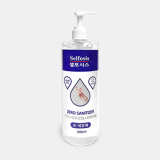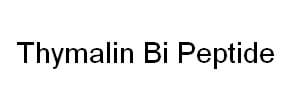AIAP0016 Thymalin Bi Peptide (Synthetic Thymalin)
Sequence: Pyr-L-Ala-L-Lys-L-Ser-L-Gln-Gly-Gly-L-Ser-L-Asn-OH
Thymalin Research
Thymalin is an immunomodulator polypeptide derived from the thymus. Synthetic Thymalin is a basic polypeptide made up of 38 amino acids residues. Studies have shown that this immunomodulator molecule does occur naturally in the thymus. A summary of studies and findings concerning the functions on the thymus are described below.
Thymus
It is a specialized bilobed secondary lymphoid organ which is critical to the development of functionally active and self-tolerant T-cells. It is also a component of the adaptive immune system. Studies have shown that the actions of the thymus are mediated by immunomodulators.
In the thymus, the precursor thymocytes do develop into mature T-cells. The process of maturation involves recombination and rearrangements of the gene segments that code for the T-cell receptor. This leads to the development of unique peptide: MHC (Major Histocompatibility Complex) combinations of the receptor and this mediates central tolerance. These T-cell receptors mediate antigen recognition and antigen presentation. The mediation is occurs through interactions between epitopes of an antigen and the corresponding paratopes of the T-cell receptor.
The process of gene rearrangements is prone to errors which could lead to the development of either non-functional T-cells or T-cells which react strongly to self-antigens (autoreactive T-cells). To prevent these errors from occurring, the developing T-cells undergo selection based on their T-cell receptors affinity and specificity. Functional T-cells undergo positive selection and the autoreactive T-cells undergo negative selection. This occurs in the central medulla of each lobe of the thymus.
The mature T-cells eventually enter into the general circulation where they constitute the T-cell repertoire which mediates the functions of the adaptive immune system. Normally, the normal T-lymphocyte population is achieved early in life and this leads to involution of the thymus in early adulthood. However, loss (or sometimes complete absence) of the thymus before these population thresholds are reached results in DiGeorge Syndrome which is characterized by severe immunodeficiency. There is still residual T-cell lymphopoiesis throughout the adult life. Nonetheless, studies have shown that complete involution of the thymus in old age is associated with increased susceptibility to severe infections and cancer development. This has been attributed to immune deficiency which impairs the immune response to infections and impairment of immune surveillance against tumors.
Other diseases associated with thymic dysfunction are allergic hypersensitivity, Severe Combined Immunodeficiency Syndrome (SCID), lymphomas, Myasthenia Gravis, thymomas and the rarity APECAD (Autoimmune PolyEndocrinopathy-Candidiasis-Ectodermal Dystrophy).
Thus, it is evident from the studies carried out on the thymus that the inductive environment provided by the thymus leads to the development of a functional, self-tolerant T-cell repertoire.
Thymic immunomodulators have the potential of restoring the integrity of thymic activity in a dysfunctional or diseased thymus, thus treating the associated immune deficiency or managing its severity. One of the most potent and efficacious pharmaceutical preparation of thymic immunomodulators is Thymalin.
How Thymalin works
It is based on the principle that natural peptides have a significantly high potential of restoring normal biologic activity and are also associated with an acceptable toxicological profile. Studies have shown conclusively that the biologic activity is restored by the active component of the drug (the polypeptide constituent) while the toxicological profile is usually associated with the vehicle used.
In Thymalin, the active component is a polypeptide, and the vehicle used is a combination of water-soluble salts. Studies have shown that the immunostimulant effects of Thymalin are due to the capability of the polypeptide to modulate the ratio of the subpopulations of functional immunocompenent cells.

 Argentina
Argentina
 Canada
Canada
 Egypt
Egypt
 Iran
Iran
 Iraq
Iraq
 Israel
Israel
 Jordan
Jordan
 Saudi Arabia
Saudi Arabia
 U.A.E.
U.A.E.
 U.S.A
U.S.A







































 China
China



